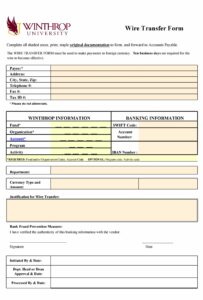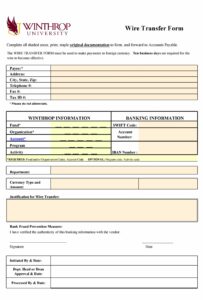Utilizing such a form provides several key advantages. It strengthens internal controls by creating a clear audit trail for all cash movements, reducing the risk of errors and discrepancies. Furthermore, it simplifies reconciliation processes, enabling businesses to efficiently track and verify cash balances. This detailed record-keeping also aids in investigations or disputes related to cash handling. Finally, it fosters transparency and trust among stakeholders by providing a verifiable record of all transactions.
This article will further explore the practical applications of these forms, delving into best practices for their creation, implementation, and management within various organizational settings. Specific examples and detailed guidelines will be provided to assist in developing robust cash handling procedures.
Key Components of a Cash Transmittal Documentation Form
Effective cash handling procedures rely on comprehensive documentation. A well-designed form ensures accurate record-keeping and facilitates seamless reconciliation. The following components are essential:
1. Unique Identifier: A distinct tracking number or reference code allows for easy identification and retrieval of specific records. This ensures that each transaction can be readily located and verified.
2. Date and Time: Precise recording of the transaction date and time establishes a chronological order of events, which is crucial for audit trails and investigations.
3. Sender Information: Clear identification of the individual or department releasing the funds, including names, designations, and potentially signatures, establishes accountability and facilitates tracking.
4. Recipient Information: Accurate details of the individual or entity receiving the funds are essential for proper allocation and reconciliation. This typically includes names, designations, and signatures.
5. Amount: The precise amount transferred must be clearly stated, both numerically and in written form, to minimize errors and prevent discrepancies. This dual representation helps ensure accuracy and clarity.
6. Purpose: A brief description of the reason for the transfer, such as “payment for goods,” “reimbursement,” or “inter-departmental transfer,” provides context and aids in analysis.
7. Authorization: Signatures or approvals from designated personnel validate the transaction and ensure adherence to internal controls. This confirms the legitimacy of the transfer.
8. Supporting Documentation: Reference numbers or attachments related to the transaction, such as invoices or receipts, provide additional context and verification. This strengthens the audit trail and provides further support for the transaction.
Complete and accurate information in these fields ensures transparent and reliable cash management processes, mitigating risks and facilitating efficient financial operations.
How to Create a Cash Transmittal Request Template
Developing a standardized template ensures consistency and accuracy in documenting cash transfers. A well-structured template facilitates efficient processing, tracking, and reconciliation of transactions.
1. Define Required Fields: Essential information includes a unique identifier, date, time, sender and recipient details, amount, purpose, and authorization. Additional fields, such as supporting documentation references, may be included depending on specific organizational needs.
2. Choose a Format: Options include digital spreadsheets, dedicated software applications, or printable forms. Selection depends on factors such as accessibility, security requirements, and integration with existing systems.
3. Design the Layout: A clear, logical arrangement of information facilitates easy data entry and review. Grouping related fields and using distinct labels enhance readability and comprehension.
4. Implement Input Validation: In digital formats, incorporating data validation rules, such as mandatory fields and numerical constraints, minimizes errors and ensures data integrity.
5. Establish Approval Workflows: Clear procedures for authorization and verification enhance internal controls and mitigate risks. Defining roles and responsibilities ensures accountability.
6. Train Personnel: Comprehensive training on proper usage of the template, including data entry procedures and approval workflows, promotes consistency and accuracy in record-keeping.
7. Regularly Review and Update: Periodic review of the template’s effectiveness and alignment with evolving organizational needs allows for necessary adjustments and improvements.
A robust template, combined with proper training and consistent application, establishes a reliable framework for managing cash transfers, safeguarding assets, and maintaining accurate financial records. This framework provides a solid foundation for sound financial management.
Standardized documentation of cash transfers provides essential control and transparency within financial operations. From detailed record-keeping and simplified reconciliation to enhanced security and strengthened accountability, the benefits are significant. Proper implementation, encompassing well-designed templates, comprehensive training, and regular review, ensures optimal functionality and alignment with organizational needs. Effective management of these processes is crucial for maintaining accurate financial records, mitigating risks, and fostering trust among stakeholders.
Organizations seeking to optimize cash handling procedures should prioritize the development and implementation of robust documentation practices. This proactive approach strengthens financial integrity, streamlines operations, and safeguards valuable assets. Continuous refinement of these processes, informed by best practices and evolving industry standards, is essential for sustained financial health and operational efficiency.

